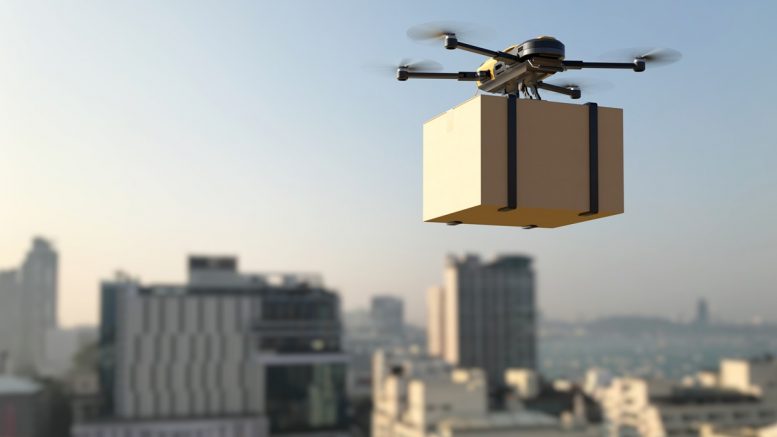In this article, experts at myGP have delved into the true benefits of launching drones for deliveries of prescriptions and medicines.
Valued at an impressive £1.2 billion in 2021, the UK commercial drone market is expected to grow significantly over the next few years. According to Statista, the number of unmanned drones – or uncrewed aerial vehicles (UAVs) – flying across the country for commercial purposes is forecast to reach over 76,000 by 2030. Specifically, about 27,500 of these will be adopted within the public and defence, education, and health sectors.
Drones can be tasked with carrying and delivering prescriptions or medical supplies, and Boots has already completed a test flight in July 2022. The UAV successfully transported prescription-only medications from Portsmouth to the Isle of Wight.
As pharmaceutical companies and health retailers continue to assess the future of UAVs in the industry, an obvious question springs to mind: what are the true benefits of launching drone-delivered prescriptions and medicines?
Patient convenience
One of the most prominent positives of using drones for medication and prescription delivery is that, in general, it should ease the whole process for patients.
Improved medical adherence
Since drones can drop prescriptions and medications at a patient’s doorstep, this new technology could also contribute to enhanced medical adherence.
There are a number of reasons why people might miss their prescribed doses, such as limited access to pharmacies or busy schedules. Bt with the aid of UAVs, patients can benefit from reliable and regular deliveries of their prescribed medication, meaning that they would be more likely to stick to their treatment plan.
What’s more, drone delivery could also be paired with reminder services or refill programmes. So when you spot that you are running low on your medication, you can promptly ask for a new dose and make sure you don’t go without it.
Easier access to remote areas
Drones also have the ability to reach remote locations with limited infrastructure or geographical barriers.
In this respect, UAVs can truly support humanitarian efforts, where medication – among many other necessities – can be delivered to individuals living in zones affected by conflicts or natural disasters.
As for UK patients who live in the countryside and have few pharmacies nearby, drones can simply make their life easier. Rather than having to drive far in search of better-stocked healthcare practices, people can receive their medication without the need for long commutes.
Currently, commercial drones have a flight range of up to 9 miles. But as technology and the drone sector continue to evolve, we can expect the range of UAVs to extend significantly in the near future.
Speed and emergency situations
Another advantage of using drones for prescription and medication delivery is that, especially in a situation where time-sensitive treatment is needed, UAVs can speed up the process massively.
For example, if you’ve gone trekking and have been bitten by a snake, drones could promptly bring antivenom injections to prevent swelling or other complications.
More importantly, in scenarios where medical attention is urgent and critical (e.g., severe allergic reactions, overdoses, etc.), UAVs can help deliver life-saving medication in a timely manner. This is because drones can bypass traffic congestion, cutting down on response times and providing patients and/or medical professionals with the required drugs.
Environmental benefits
Finally, drone-delivered prescriptions and medication could have a positive impact on the environment, minimising your own carbon footprint.
As UAVs operate on electric or battery-powered systems, they can produce considerably less carbon emissions and pollutants than more traditional methods of delivery. Not only that, but they can also reduce noise pollution on the streets, as they tend to be quieter than vehicles.
With more UAVs in the air and fewer cars on the road, moving to drones for prescriptions and medication deliveries can mitigate traffic congestion in urban areas. As well as creating a better traffic flow, a lower number of vehicles in town and city centres can help preserve the well-being of our surroundings.





